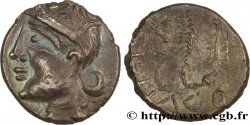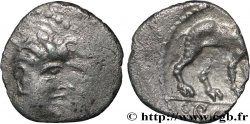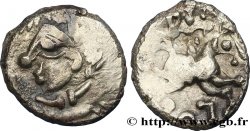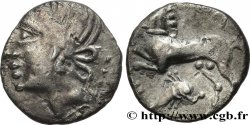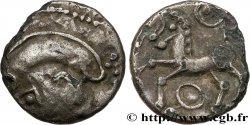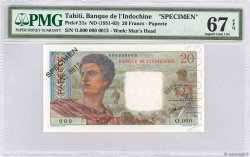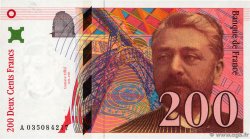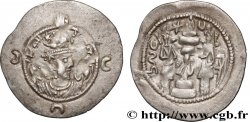v25_0642 - EDUENS, ÆDUI (BIBRACTE, Area of the Mont-Beuvray) Quart de statère en électrum à la lyre
MONNAIES 25 (2006)
Starting price : 220.00 €
Estimate : 450.00 €
Realised price : 385.00 €
Number of bids : 3
Maximum bid : 464.00 €
Starting price : 220.00 €
Estimate : 450.00 €
Realised price : 385.00 €
Number of bids : 3
Maximum bid : 464.00 €
Type : Quart de statère en électrum à la lyre
Date: c. 70-50 AC.
Mint name / Town : Autun (71)
Metal : electrum
Diameter : 10,4 mm
Orientation dies : 11 h.
Weight : 1,62 g.
Rarity : R2
Coments on the condition:
Bel exemplaire frappé sur un flan court et épais. Faiblesse de frappe au droit, mais revers en fort relief avec des cassures de coins périphériques
Obverse
Obverse legend : ANÉPIGRAPHE.
Obverse description : Tête humaine laurée à droite, la chevelure stylisée ; grènetis.
Reverse
Reverse legend : ANÉPIGRAPHE.
Reverse description : Cheval galopant à droite ; au-dessus du cheval, l'aurige ; lyre sous le cheval.
Commentary
L'aurige est très stylisé ; sa main (censée tenir les rênes) est composée de trois doigts qui se terminent par des globules se confondant eux-mêmes avec la crinière bouletée. La cassure de coins entre les jambes du cheval rend difficile l'interprétation du symbole décoratif ; il semble néanmoins qu'il s'agisse d'une lyre. Seul un exemplaire (dont le droit est très proche du nôtre) est connu avec une rouelle au revers.








 Report a mistake
Report a mistake Print the page
Print the page Share my selection
Share my selection Ask a question
Ask a question Consign / sell
Consign / sell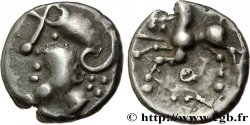
 Full data
Full data